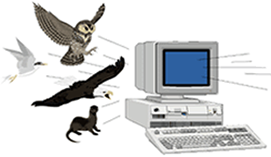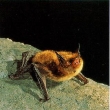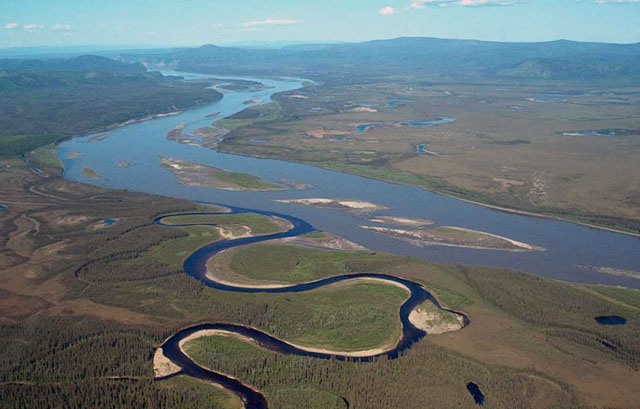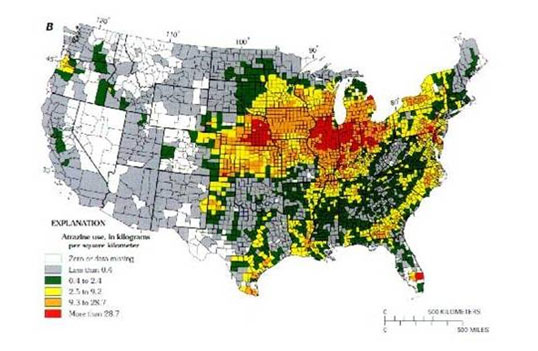- Home
- About S&T
- Taxa/Organisms
- Ecosystems
- Issues
- Methods & Tools
- Reports & Publications
- Location
- Search
Publisher: USGS | Science Center: Patuxent Wildlife Research Center (PWRC, Laurel) | Format: URL
www.pwrc.usgs.gov — BEST Large River Fish Health Data Query Tool provides a simplified portal for accessing database that serves fish health endpoints measured through the Biomonitoring of Environmental Status and Trends (BEST) Project's Large River Monitoring Network (LRMN). The tool allows the user to search the database by species, chemical, river basin, sampling More...

Publisher: USGS | Science Center: Forest and Rangeland Ecosystem Science Center (FRESC, Corvallis) | Format: URL
ris.wr.usgs.gov — The Raptor Information System (RIS) is a computerized literature retrieval system that focuses on raptor management, human impacts on raptors, the mitigation of adverse impacts, and basic raptor biology (with an emphasis on population dynamics and predation). The raptor contaminants database is a subset of RIS that includes references with More...

Publisher: USGS | Science Center: Biological Informatics | Format: URL
biology.usgs.gov — Field studies in wildlife toxicology often rely on the analysis of contaminant levels in wildlife tissues. Although this provides information on an animal's exposure and the accumulated pollutant levels, it does not explicitly identify whether the contaminant has had toxic effects. Monitoring biochemical or molecular responses can provide More...

Publisher: USGS | Science Center: Columbia Environmental Research Center (CERC, Columbia) | Format: .PDF
www.cerc.usgs.gov — The study described in this report was conducted as part of the USGS Biomonitoring of Environmental Status and Trends (BEST) Program. This project collected, examined, and analyzed 217 fish representing three species at 10 stations in the US portion of the Yukon River Basin (YRB) from May to October 2002. Four sampling sites were located on the More...

Publisher: USGS | Science Center: Western Fisheries Research Center (WFRC, Seattle) | Format: URL
wfrc.usgs.gov — Mercury contamination from historic gold mining operations is widespread in many rivers, lakes, and reservoirs on the western slopes of the Sierra Nevada. A multidisciplinary investigation by USGS is attempting to better understand mercury dynamics and to identify hot spots within Camp Far West Reservoir in order to determine if remediation More...

Publisher: USGS | Science Center: Columbia Environmental Research Center (CERC, Columbia) | Format: URL
www.cerc.usgs.gov — The primary goal of the proposed research is to evaluate selenium and atrazine exposure and effects to fish, amphibians, and waterfowl that utilize the Refuge. The following subordinate objectives will be met to investigate selenium exposure and effects to wildlife on the Refuge: 1.Measure selenium concentrations and total organic content in More...

Publisher: USGS | Science Center: Western Ecological Research Center (WERC, Sacramento) | Format: URL
www.werc.usgs.gov — The Aleutian archipelago of Alaska, which separates the North Pacific Ocean from the Bering Sea, supports a diverse and abundant community of resident and migratory seabirds, comprising over 26 species and 10 million birds. However, comparatively little data exist on sources of environmental contaminants for this community despite extensive More...

Publisher: USGS | Science Center: Western Fisheries Research Center (WFRC, Seattle) | Format: URL
wfrc.usgs.gov — Lake Natoma, an 8,760 acre-feet reservoir on the American River, is managed by the U.S. Bureau of Reclamation (USBR) for multiple uses that include fishing and other water-based recreation. Preliminary results from 22 fish samples collected in Lake Natoma during August 2000 indicate that the mercury content may approach or exceed guidelines for More...

Publisher: USGS | Science Center: Contaminant Biology | Format: URL
biology.usgs.gov — This web page lists databases related to contaminant research across government agencies and partnerships. Many of the links include access to documented trends in the occurrence of persistent toxic chemicals that may threaten fish and wildlife resources, summaries of the results from aquatic acute toxicity tests, Avian Incident Monitoring, More...

Publisher: USGS | Science Center: Patuxent Wildlife Research Center (PWRC, Laurel) | Format: URL
www.pwrc.usgs.gov — Written summaries of biological characteristics and contaminant exposure and effects data for 38 coastal and estuarine terrestrial vertebrates are available. Species were selected based on their previous use in contaminant monitoring, their status as valued natural resources, or as representatives of taxonomic groups. Characterizations were More...
